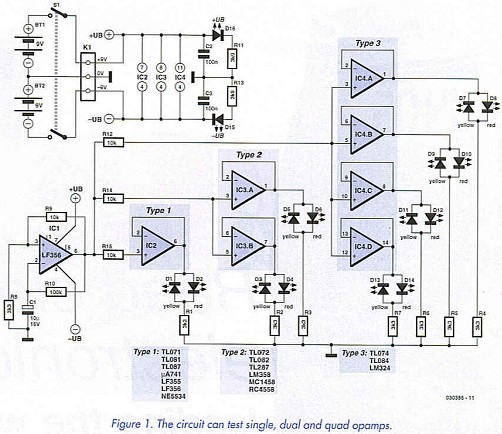Hi guys,
Just a quick thread to get some ideas from the community about a design I am trying to implement.
As many of you around, I've always wondered, while repairing some piece of audio equipment, if any given op amp could be fried or not, and thus have always wanted to have a dedicated testing apparatus in order to test op amps.
So I've stumbled across several more or less refined designs on the web, and tried to implement this one :
http://www.seekic.com/blog/project_solutions/2011/08/18/OPAMP_TESTER.html
It is very simple in theory, it just produces a 1 Hz square wave with a simple RC oscillator, sends it to the DUT set at unity gain and uses the output to blink a pair of upside down LED on the up and down fronts of the wave.
So the design works well on all the op amps I have tested EXCEPT on some references I have : some SIP LM4558 and some NE5532 from China (source unconfirmed, may be fakes. I also have some original JRC5532 and these ones test OK !! So I guess the internal design is definitely different between these two of the same references). On these two op amps, only one LED per channel lights up and stays on (no blinking). I believe this is due to the internals of theses op amps which may have some diodes or other forms of protections making it impossible to sink (or source) current when the inverting input is shorted to the output of the op amp, such as in this design.
Can someone give me some ideas on ways to improve this design so that these op amps giving weird readings (and that I know are good) test properly ? Maybe I need to add some RC on the feedback loop or completely redesign the whole thing...
If you know any BETTER design for such a test I would be highly interested too ! I have not been able to find any really interesting and clever design around for such a simple test.
The circuit I am willing to design would have the following requirements :
-Just do a quick test GO/NO GO of as many op amps as possible.
-No measurements of characteristics is required. Just simple GO/NO GO of each channel.
-Be safe for all op amps.
-May be quite complex and require evolved parts (MCU, voltage conditioners...)
If someone has some idea, I'd be HIGHLY thankful !